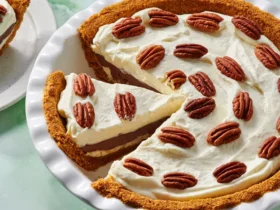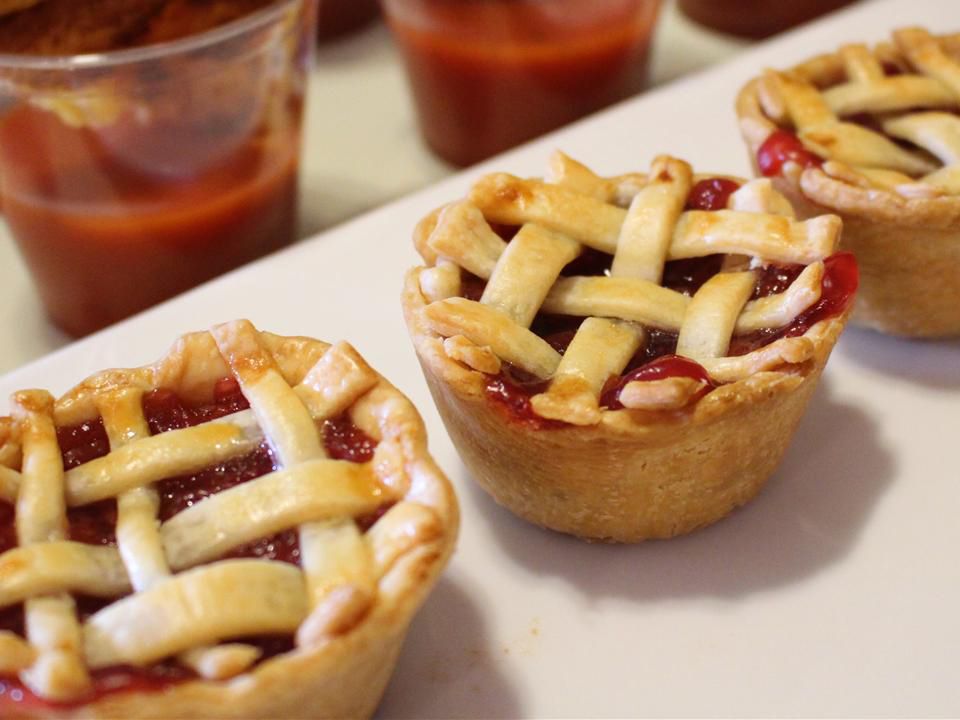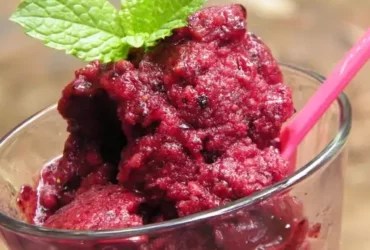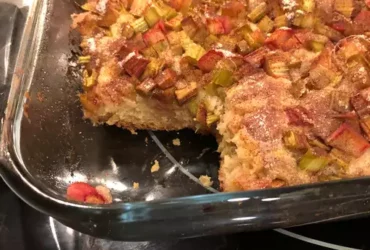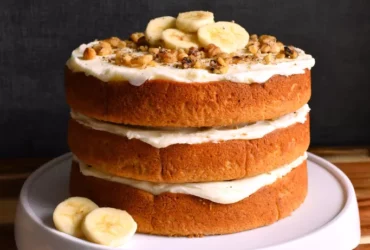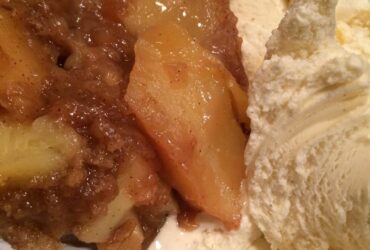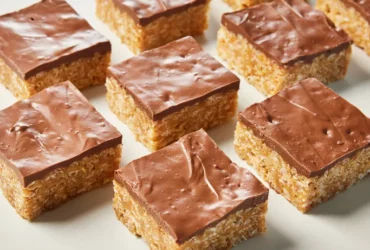Ingredients
Main Ingredients
In cooking and baking, ingredients play a crucial role in determining the final taste, texture, and overall quality of a dish or dessert, such as cherry pie filling. The main ingredients are the primary components that make up the bulk of the recipe.
For a traditional cherry pie filling recipe, some common main ingredients include fresh or frozen cherries, granulated sugar, cornstarch, salt, and sometimes water or another liquid such as lemon juice or almond extract. The type and amount of these ingredients can vary depending on personal preference, desired consistency, and the intended use of the filling.
Cherries are the star ingredient in cherry pie filling, providing natural sweetness, flavor, and texture. They can be fresh or frozen, with frozen cherries being a convenient option for making the filling throughout the year. Fresh cherries are best used during their peak season when they’re sweeter and more flavorful.
Granulated sugar is added to balance out the tartness of the cherries and enhance their natural sweetness. The amount of sugar can be adjusted to suit individual tastes, but a general rule of thumb is to use 1/2 cup of sugar per cup of cherries.
Cornstarch is used as a thickening agent in cherry pie filling to achieve the desired consistency. It’s typically mixed with cold water or another liquid to create a slurry before being added to the cherry mixture. This helps prevent lumps from forming and ensures a smooth, even texture.
Salt adds depth and balance to the flavor of the filling without overpowering it. Use a small amount (about 1/4 teaspoon per cup of cherries) as excessive salt can alter the taste and make the filling too salty.
Water or another liquid is sometimes added to adjust the consistency of the filling, making it thinner or thicker depending on preference. Lemon juice or almond extract can be used in place of water for an extra boost of flavor.
In summary, cherry pie filling main ingredients include fresh or frozen cherries, granulated sugar, cornstarch, salt, and sometimes a liquid such as water, lemon juice, or almond extract. The ratio and type of these ingredients may vary depending on the intended use, personal taste, and desired texture.
Tart cherries (fresh or frozen)
Tart cherries are a crucial ingredient for making a delicious cherry pie filling, and they come in two main forms: fresh or frozen.
Fresh tart cherries are typically available during the summer months, from May to August, depending on your location and the specific variety of cherry tree. They have a bright red color, a firm texture, and a sweet-tart flavor that’s perfect for baking. To use fresh tart cherries in your pie filling recipe, you’ll need to pit them first. This can be done manually with a pitter or by using a food mill to remove the pits.
Frozen tart cherries are available year-round and offer several advantages over their fresh counterparts. They’re often less expensive, have a longer shelf life, and are already pre-pitted, making them a convenient choice for home bakers. Frozen tart cherries can be found in most supermarkets or online, and they come in various forms, such as frozen whole cherries, cherry juice concentrate, or dried tart cherries.
When choosing frozen tart cherries, look for products that are labeled “unsweetened” or “100% fruit” to avoid added sugars. Some brands may also offer organic or non-GMO options, which can be a good choice if you’re looking for more natural ingredients. It’s worth noting that frozen tart cherries will typically have a slightly softer texture than fresh cherries and may require a bit more cooking time to reach the desired consistency.
In terms of quality, look for tart cherries that are free from mold, insects, or other contaminants. If you’re buying frozen tart cherries in bulk, consider purchasing them from a reputable supplier to ensure freshness and quality. When it comes to fresh tart cherries, choose those with bright red coloration and avoid any that show signs of spoilage.
Overall, both fresh and frozen tart cherries can be excellent choices for making cherry pie filling, depending on your preferences and the time of year you’re baking. By choosing high-quality ingredients and following proper food safety guidelines, you’ll be well on your way to creating a delicious homemade cherry pie filling that’s sure to impress family and friends.
Sugar
- Sugar plays a crucial role in the Cherry Pie Filling Recipe. It not only adds sweetness to the filling but also helps to balance out the tartness of the cherries.
- The type of sugar used can affect the flavor and texture of the filling. Some common types of sugar include granulated sugar, brown sugar, and confectioner’s sugar. In this recipe, we will be using granulated sugar.
- Granulated sugar is a type of white sugar that is commonly used in baking. It dissolves easily and adds a clean sweetness to the filling. Brown sugar, on the other hand, has a slightly caramel-like flavor and can add depth to the filling.
- Confectioner’s sugar, also known as powdered sugar, is a fine powder made from granulated sugar that has been ground into an even finer texture. It is often used to dust the top of pies or desserts for a decorative finish.
- In this recipe, we will be using 1 cup of granulated sugar to balance out the tartness of the cherries. The exact amount of sugar may vary depending on personal preference and the sweetness of the cherries.
- It’s worth noting that some recipes may call for a liquid sweetener like corn syrup or honey. These can add a different type of sweetness and flavor to the filling, but are not typically used in traditional cherry pie fillings.
- In summary, sugar plays a vital role in the Cherry Pie Filling Recipe, adding both sweetness and balance to the filling. The type of sugar used can affect the flavor and texture, with granulated sugar being the most common choice.
Water
The ingredients required for this cherry pie filling recipe are as follows:
Main Ingredients
- 2 cups fresh or frozen cherries, pitted (any variety)
- 1/4 cup granulated sugar
- 2 tablespoons cornstarch
- 1 tablespoon lemon juice
- 1/4 teaspoon salt
Pantry Staples
- Water: this is essential for rehydrating the cornstarch and thickening the filling, so use as needed. You may need approximately 2-3 tablespoons of water depending on how thick or thin you like your pie filling.
Optional Ingredients
- 1/4 cup almond extract (optional)
- 1 tablespoon butter or oil (for greasing the pan and preventing sticking)
The water will help to dissolve the cornstarch, which in turn thickens the filling. It’s essential not to over-dilute the mixture, as this can result in a runny pie filling.
Spices and Preservatives
The ingredients that are typically used to make cherry pie filling include:
- 2 cups of pitted cherries, fresh or frozen
- 1 cup of granulated sugar
- 2 tablespoons of cornstarch
- 1 tablespoon of lemon juice
- 1/4 teaspoon of salt
- 1/4 cup of water
- 1 tablespoon of butter (optional)
The spices that can be added to give the cherry pie filling an extra boost of flavor include:
- 1/2 teaspoon of ground cinnamon
- 1/4 teaspoon of ground nutmeg
- 1/4 teaspoon of ground ginger
As for preservatives, it’s worth noting that homemade cherry pie filling typically does not contain any added preservatives. This is because the filling will be stored in the refrigerator and consumed within a relatively short period of time.
However, some people may choose to add a small amount of potassium sorbate or sodium benzoate to prevent mold growth and extend the shelf life of the filling.
It’s worth noting that if you’re planning to can your cherry pie filling using a water bath canner, you will need to follow tested safe canning procedures to ensure that the filling is properly sterilized and sealed to prevent spoilage and foodborne illness.
You may also choose to add some pectin to help thicken the filling and improve its texture.
When selecting ingredients for your cherry pie filling, be sure to choose fresh or frozen cherries that are free of pits, stems, and leaves. You can use either sweet or tart cherries, depending on your personal preference. Some popular types of cherries for making cherry pie filling include:
- Bing
- Rainier
- Lambert
- Montmorency
Remember to store your homemade cherry pie filling in a clean, airtight container in the refrigerator and consume it within 3-5 days. You can also freeze the filling for later use.
Almond extract
Almond extract is an essential ingredient in many baked goods and desserts, including cherry pie filling. It’s a concentrated flavoring made from the edible kernel of the almond, a type of stone fruit that’s native to the Middle East and Mediterranean region.
The process of making almond extract involves extracting the oil from almonds and then mixing it with other ingredients, such as glycerin, water, and flavorings, to create a concentrated liquid. This liquid is highly potent and can be added in small amounts to recipes to give them a distinct almond flavor.
In baking, almond extract is often used to add depth and complexity to sweet treats like cakes, cookies, and pies. It’s particularly well-suited for desserts that feature cherries or other stone fruits, as it complements their natural flavors without overpowering them.
When using almond extract in a recipe, it’s essential to note the recommended amount to add. Too much almond extract can make a dish taste bitter or soapy, while too little may not provide enough flavor. A general rule of thumb is to start with a small amount (about 1/4 teaspoon per cup of flour) and adjust to taste.
In the context of our cherry pie filling recipe, almond extract serves several purposes. First, it enhances the natural sweetness of the cherries and balances out their tartness. Second, it adds a subtle nutty flavor that complements the richness of the sugar and spices in the filling.
To make our cherry pie filling recipe even more delicious, we recommend using high-quality almond extract that’s free from additives and artificial flavorings. This will ensure that your finished product tastes authentic and not overpowering.
With its unique combination of sweet, nutty flavors, almond extract is an essential ingredient in our cherry pie filling recipe. It elevates the dish to new heights and provides a depth of flavor that’s sure to impress family and friends.
Butter
The primary ingredients for this recipe include:
- Peaches or cherries: This fruit provides the foundation and sweetness for the filling.
- Sugar: A moderate amount of sugar is added to balance the tartness of the fruit.
- Water: This ingredient helps to prevent the mixture from thickening too quickly.
- Cornstarch or tapioca: These thickeners help achieve the desired consistency for the filling.
- Lemon juice: A squeeze of lemon adds a touch of acidity and brightness to the filling.
One ingredient that can be used in this recipe is butter, which serves several purposes:
- Flavor enhancement: Melted butter contributes a rich, creamy flavor to the filling.
- Texture improvement: Butter helps to create a smooth and silky texture for the filling.
- Sweetener reduction: By adding a small amount of melted butter, it’s possible to reduce the amount of sugar required in the recipe.
The importance of using high-quality ingredients:
- Freshness matters: Fresh fruit will yield better results and retain its natural flavor.
- Seasonal produce: Using seasonal fruits ensures that they are at their peak ripeness and flavor.
- Purity of ingredients: Using pure and unrefined ingredients, such as organic sugar, will contribute to the overall quality of the filling.
Instructions
Cooking the Cherries
- When it comes to cooking cherries for a homemade cherry pie filling, the process requires attention to detail and adherence to certain guidelines to achieve the desired outcome.
- The first step in cooking the cherries involves preparation. This includes washing the cherries thoroughly under cold running water to remove any dirt or debris.
- Next, pit the cherries by removing the seeds from each one. There are several tools available for this purpose, including cherry pitters and even a simple method of holding the cherry between your thumb and index finger and gently squeezing it to release the seed.
- Once the cherries have been pitted, they can be added to a large pot or saucepan along with an equal amount of granulated sugar. The type of sugar used is not particularly important, but white or brown sugar work equally well for this recipe.
- Add lemon juice, which serves as a preservative and adds flavor to the cherries. A common ratio for lemon juice and cherries is about 1 tablespoon per cup of pitted cherries.
- Next, add in any additional spices or flavorings you may wish to include in your cherry pie filling recipe. Some popular options include cinnamon, nutmeg, and. The key is to taste as you go and adjust the seasoning accordingly.
- Now that all of the ingredients have been added, it’s time to heat the mixture over medium heat. Stir frequently at first, allowing the sugar to dissolve completely into the cherry juice.
- Bring the mixture to a boil, then reduce the heat to low and simmer for 20-30 minutes or until the cherries have broken down and the filling has thickened slightly.
- This is where patience comes in handy. Cooking the cherries slowly allows them to release their natural pectin, which acts as a natural thickening agent.
Pit the cherries and place them in a saucepan.
To make the cherry pie filling, you will need to pit the cherries and prepare them for cooking. Here’s a step-by-step guide on how to do it:
- Start by washing the cherries thoroughly under cold running water to remove any dirt or debris.
- Remove the stems from the cherries, if they have not already been removed.
- Carefully twist the cherry to release the pit, making sure it comes out easily.
Hold a cherry firmly in place with one hand and locate the pit in the center of the fruit.
- Repeat this process for each cherry until you have pitted all the cherries needed for your recipe.
- Once all the cherries are pitted, place them in a large saucepan and set aside for now.
Add sugar, water, almond extract, and butter to the saucepan.
To begin making this delicious Cherry Pie Filling, follow the instructions carefully to ensure that all ingredients are combined correctly.
First, you will need to add Sugar to the saucepan. The amount required is 1 cup of granulated sugar. This will help to balance out the tartness of the cherries and create a sweet flavor profile.
Next, measure out 1 cup of water and pour it into the saucepan with the sugar. Make sure to use cold water as this will help to dissolve the sugar evenly and prevent lumps from forming.
Now, add 2 tablespoons of Almond Extract to the mixture. This flavor enhancer is optional but highly recommended as it gives the filling a rich, aromatic taste that complements the cherries perfectly.
Finally, melt 4 tablespoons of Butter in the saucepan over low heat, stirring occasionally. Be careful not to let the butter burn or brown too much as this can affect the flavor and texture of the filling.
Once all the ingredients are combined and the sugar has dissolved, increase the heat to medium and bring the mixture to a boil. Use a candy thermometer to check the temperature, aiming for 220°F (104°C) or the soft-ball stage. This is crucial in creating a gel-like texture that will set when cooled.
Reduce the heat to low and let the filling simmer for about 10 minutes or until it thickens and reaches the desired consistency. Be careful not to overcook the mixture as this can cause it to become too stiff or even crystallize.
Remove the saucepan from the heat and let it cool slightly before pouring the filling into a clean glass jar or container for storage in the fridge. Your homemade Cherry Pie Filling is now ready to use in various recipes, such as making pies, cakes, or topping ice cream!
- Preparation Time: 15 minutes
- Cooking Time: 10-15 minutes
- Total Time: 25-30 minutes
Some additional tips for using this recipe:
- To ensure the filling sets properly, make sure to use a sugar syrup that has cooled to room temperature before adding it to your cherries.
- For a more intense flavor, try adding some Kirsch or cherry liqueur to the mixture along with the almond extract.
- This recipe can be easily doubled or tripled if you need a larger quantity of filling for multiple recipes.
Cooking Down the Filling
The process of cooking down the filling is a crucial step in creating the perfect Cherry Pie Filling. This stage involves reducing the mixture of cherries and sugar to achieve a rich, intense flavor and a thick, syrupy consistency.
To begin with, it’s essential to choose the right type of cherries for this recipe. Sweet or tart cherries can be used, but tart cherries will provide a more authentic cherry pie taste.
The first step in cooking down the filling is to combine the cherry mixture with a small amount of water in a large saucepan. The sugar content should be adjusted according to your preference for sweetness level. Some recipes may call for more or less sugar, but generally, a 1:2 ratio of sugar to cherry is suitable.
Next, place the saucepan over medium heat and bring the mixture to a simmer. Reduce the heat to low and let it cook for about 20-30 minutes, or until the cherries have broken down and released their juices. Stir occasionally to prevent scorching.
As the filling cooks, you’ll notice that it begins to thicken and reduce in volume. This is a sign that the sugars are caramelizing and the flavors are deepening. Continue cooking for another 10-15 minutes, or until the desired consistency is reached. The filling should coat the back of a spoon and hold its shape when cooled.
Once the filling has thickened to your liking, remove it from the heat and let it cool slightly before straining it through a fine-mesh sieve to remove any pulp or seeds. The resulting Cherry Pie Filling is now ready to use in your favorite pie recipe.
Note that cooking time may vary depending on the type of cherries and personal preference for sweetness level. It’s essential to taste the filling as it cooks and adjust the seasoning accordingly.
Cook over medium heat until the cherries have broken down and the mixture has thickened.
The instruction to cook over medium heat until the cherries have broken down and the mixture has thickened is a critical step in creating a rich and flavorful Cherry Pie Filling. This process typically occurs when cooking the filling on the stovetop or in a saucepan.
To achieve this, it’s essential to use a medium heat setting. If the heat is too low, the cherries may not break down quickly enough, resulting in a uneven texture. Conversely, if the heat is too high, the filling can scorch or become too thick too quickly.
A good starting point for cooking over medium heat is to begin by heating the mixture to a gentle simmer. This will allow the flavors to meld together and the cherries to start breaking down. As the mixture cooks, stir it occasionally to prevent any ingredients from sticking to the bottom of the pan.
As the mixture continues to cook, you’ll notice that it begins to thicken due to the reduction of the liquid content. This is a normal process and indicates that the filling is ready for further use in making a Cherry Pie Filling Recipe. It’s essential not to overcook the mixture at this stage, as it can easily become too thick and lose its desired consistency.
Once the cherries have broken down and the mixture has reached the desired thickness, remove the saucepan from the heat source. Allow the filling to cool slightly before transferring it to an airtight container for storage in the refrigerator or freezer.
This Cherry Pie Filling can then be used as a topping for various desserts, such as ice cream or yogurt, or even as a filling for pastries and cakes. Enjoy!
Tips and Variations
Using Frozen Cherries
- Tips and Variations for Using Frozen Cherries in Your Cherry Pie Filling Recipe
- Frozen cherries are a convenient and cost-effective alternative to fresh cherries, especially during certain times of the year when they’re not in season.
- Here are some tips and variations you can try when using frozen cherries in your cherry pie filling recipe:
Thawing Frozen Cherries
- Refrigerate the bag of frozen cherries overnight to thaw slowly, allowing them to release their juices as they thaw.
- Let the frozen cherries sit at room temperature for about 30 minutes to an hour before using. This will help them thaw faster and be easier to work with.
- Use a fine-mesh strainer or cheesecloth to strain the thawed cherries, removing any excess liquid and pits that may have fallen off during the thawing process.
Pitting Frozen Cherries
- Place the frozen cherries in a bowl of cold water and let them sit for about 10-15 minutes to loosen their skins.
- Use a cherry pitter or a paring knife to carefully remove the pits from each cherry. Be gentle, as frozen cherries can be brittle and prone to cracking.
Variations on Cherry Pie Filling
- Bourbon-Infused Cherry Pie Filling: Add 2 tablespoons of bourbon or other spirits to the cherry mixture during the cooking process. This will add a rich, complex flavor to your filling.
- emon Zest and Juice: Add some grated lemon zest (about 1 tablespoon) and juice (about 2 tablespoons) to balance out the sweetness of the cherries.
- Almond Extract: Add a few drops of almond extract (about 1/4 teaspoon) to give your cherry filling a subtle nutty flavor.
Incorporating Other Fruits and Spices
- Peaches or Apricots: Combine the frozen cherries with some canned peaches or apricots, along with their juices for added sweetness and flavor.
- Cinnamon and Nutmeg: Add a pinch of cinnamon and nutmeg to give your cherry filling a warm, spicy flavor.
These variations will add new layers of depth and complexity to your homemade cherry pie filling recipe. Experiment with different combinations of ingredients to find the one that suits your taste preferences the best!
Thaw frozen cherries first before using them in this recipe.
To make a delicious and authentic Cherry Pie Filling, it’s essential to follow some crucial tips and variations, particularly when working with frozen cherries.
Frozen Cherry Preparation:
- Thawing frozen cherries before using them in this recipe is vital for achieving the right consistency and flavor. You can thaw them by leaving them in room temperature overnight or by placing the container under cold running water.
Tips for Achieving Perfect Consistency:
- For a smooth pie filling, it’s crucial to strain the cherry mixture through a fine-mesh sieve before cooking. This step will help remove any excess liquid and seeds, resulting in a silky and uniform texture.
Adding Flavors and Spices:
- You can enhance the flavor of your Cherry Pie Filling by adding other ingredients like almond extract, lemon zest, or even a pinch of salt. These additions will complement the natural sweetness of the cherries and create a more complex taste profile.
Using Different Types of Cherries:
- If you prefer a different flavor profile, you can experiment with other types of cherries, such as sour or tart cherries. These varieties will provide a distinct taste and may require adjustments to the sugar content in the recipe.
Cooking Time and Method:
- The cooking time for this recipe may vary depending on the type of cherries used and your preferred level of doneness. You can cook the filling over medium heat, stirring constantly, until it thickens to your liking.
Storage and Freezing:
- To store your homemade Cherry Pie Filling, transfer it to an airtight container and keep it in the refrigerator for up to 3 days or freeze it for later use. When you’re ready to use it, simply thaw the filling at room temperature or reheat it gently over low heat.
Conclusion
By following these tips and variations, you’ll be able to create a delicious and authentic Cherry Pie Filling that’s perfect for topping ice cream, yogurt, or even using as a filling for cakes and pastries. Happy baking!
Adding a Twist
- Incorporating unique twists into traditional recipes like cherry pie filling can elevate the flavor and presentation to new heights. One popular variation involves adding a splash of liqueur, such as Grand Marnier or Kirsch, to give the filling an added depth of flavor.
- For a more exotic twist, try incorporating Asian-inspired flavors by adding a teaspoon of sesame oil or a tablespoon of soy sauce to the filling. This will not only enhance the flavor but also provide a fascinating contrast to traditional cherry pie fillings.
- Another approach involves adding a pinch of warm spices like cinnamon, nutmeg, or cardamom to create a unique and aromatic flavor profile. These spices will complement the sweetness of the cherries and add a sophisticated twist to the filling.
- A delicious variation for those who enjoy citrus flavors is to add some freshly squeezed lemon juice to balance out the sweetness of the cherries. This will also help to prevent the filling from becoming too sweet.
- For a fruity twist, consider adding other fruits like blueberries or raspberries to create a mixed-berry pie filling. This will not only increase the flavor but also add visual appeal to the finished product.
- A creative approach involves using different types of sugar, such as honey or maple syrup, to sweeten the filling instead of refined white sugar. This will provide a richer and more complex flavor profile.
- Another variation that’s perfect for those who enjoy nuts is to add some toasted almonds or walnuts to the filling. This will not only enhance the texture but also add a delightful crunch to the finished pie.
- For a seasonal twist, consider adding some dried cranberries or cherries to the filling in addition to fresh ones. This will provide a beautiful contrast of textures and flavors.
- Incorporating different types of milk or cream can also elevate the flavor and texture of the filling. Try using almond milk, coconut cream, or heavy cream to create a unique and delicious variation.
Add a splash of liqueur, such as cherry or orange, to the filling for extra flavor.
Add a splash of liqueur, such as cherry or orange, to the filling for extra flavor and depth. This can be achieved by stirring in 1-2 tablespoons of the chosen liqueur into the filling mixture before assembling the pie. The type and amount of liqueur used will ultimately depend on personal taste preferences.
For a more subtle flavor, start with 1 teaspoon of liqueur per cup of filling and adjust to taste. If using cherry liqueur, it’s best to choose one that’s not too sweet, as the natural sweetness of the cherries should still shine through.
Incorporating other flavor combinations can also enhance the overall taste experience. Consider pairing cherry with a hint of almond extract or a drizzle of Grand Marnier for added complexity.
Alternatively, experiment with different types of liqueurs to create unique and personalized variations. For example, an orange-infused liqueur like Cointreau can complement the tartness of the cherries, while a liqueur like Kahlúa can add a mocha-like flavor profile.
Don’t be afraid to get creative and push the boundaries with different combinations. The key is to balance the flavors so that no single ingredient overpowers the others, allowing each bite to harmonize in a delightful symphony of taste
- Best Datanyze Alternatives for 2025 - April 24, 2025
- Best Hunter.io Alternatives for 2025 - April 22, 2025
- Best Lead411 Alternatives for 2025 - April 22, 2025


